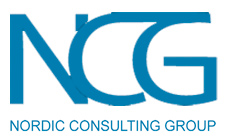The basic approach presented here is to break down the qualitative changes into smaller steps and thereafter apply a quantifiable approach. For the ones working with Outcome Mapping, inspiration can be drawn from development of so-called progress markers!
Example 1
A national programme that works with 7 local partners.
One qualitative indicator is called: “Level of participation of excluded groups in decision-making”
The national programme and each partner must first agree on what ‘levels of participation’ means to them (as exemplified below) and can thereafter decide to track the ‘participation’ following agreed parameters.
| Project A | Poor representation (e.g. little diversity in terms of sex, age, ethnicity and other parameters as relevant – here with youth and women) | Good representation (High level of representation mirroring the group in the community) | Participation and voice (groups speak up about their needs, challenges and possibilities) |
Inclusion and contribution (ideas and needs of a diverse set of actors are expressed in decision-making) |
| Young women | 6 | 2 | ||
| Young men | 4 | 2 | 1 | 1 |
| Women (adult, not elderly) | 4 | 2 | 2 |
Project A works in 8 communities, in particular with youth, as well as with adult women. At project start they see that the level of participation is different for young women and men. Young women are not represented in 6 of the communities’ decision-making structures, and although they are represented in 2 of the communities, they do not participate and their ideas, needs and thoughts are not included in decision-making processes. Young men are included and able to contribute with their thoughts and ideas fully in only one community’s decision-making structure. Project A also sees that adult women are better situated, compared to the youth, but are also excluded. In 4 communities they are represented, in 2 they participate and speak, but it is only in 2 of the community structures that they are included and can contribute with ideas and thoughts in actual decision-making.
Example 2
A global programme that works with 10 partners (10 projects) to diminish conflict over land areas.
The qualitative indicator is called: “Estimated level of conflict in relation to land areas”
The programme and each project must first agree on what ‘levels of conflict’ are (as exemplified below) and can thereafter decide to track the conflicts by counting at what stage the conflicts are.
|
|
There is a lack of interaction between the parties |
A dialogue is taking place between the parties |
An agreement has been reached |
Agreement is documented in writing |
|
Project A |
4 |
1 |
|
|
|
Project B |
1 |
|
1 |
|
Project A has identified 5 conflicts within which they are going to work. The project baseline shows that there is no interaction present at all in 4 of the conflicts, and that a dialogue has been initiated in one conflict (?) area. Project A can use the baseline and track if the conflicts are changing over time. At the end of the project, 3 conflicts could possibly have a dialogue, in 1 conflict an agreement could have been reached, and in 1 conflict a written agreement is in place.
Besides providing aggregated information, the tool also provides each project partner with the opportunity to show that although not all 5 conflicts were resolved with a written agreement (as the above example), the process did lead to changes.
Author:
Anja Nordlund,
NCG’s senior Gender Equality and Equal Opportunity Expert


